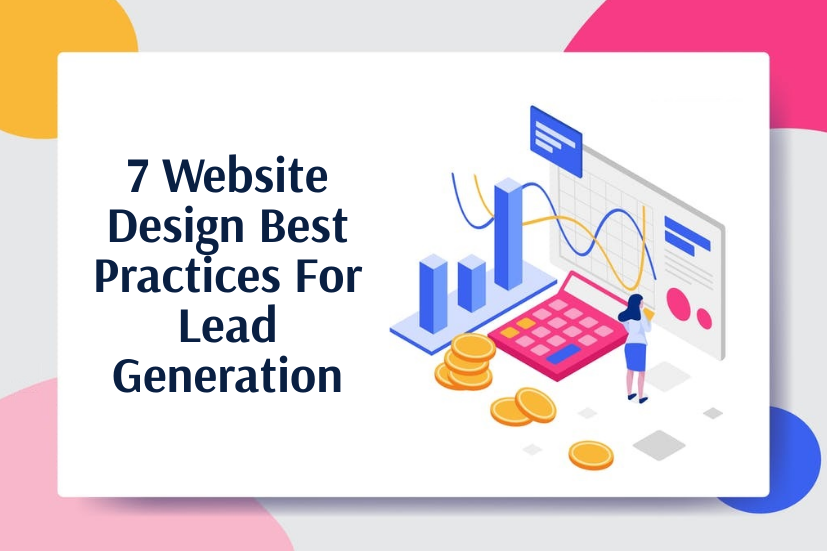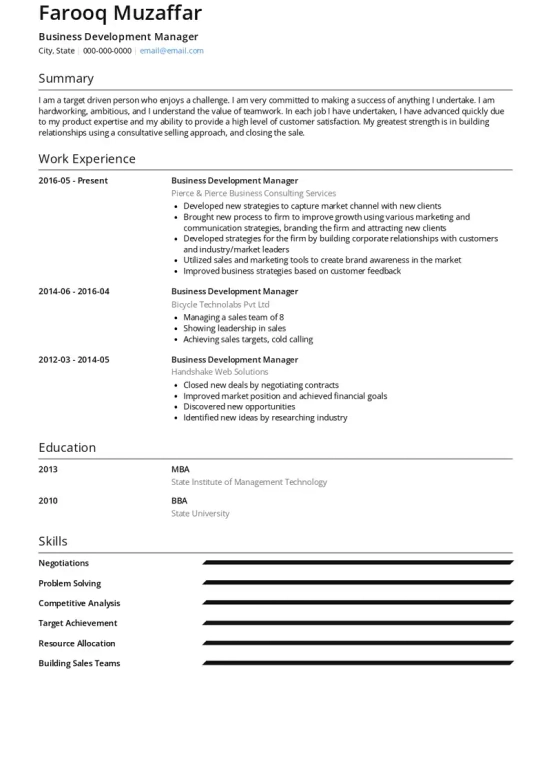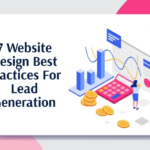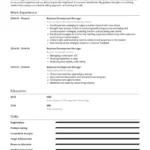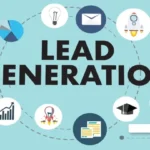
Paid marketing is essential for businesses aiming to grow fast. It covers various strategies to promote products and services.
In today’s competitive world, relying only on organic reach isn’t enough. Paid marketing offers a direct way to reach your target audience. From search ads to social media promotions, these methods can boost your visibility. This blog post will guide you through the A to Z of paid marketing.
You’ll learn about different techniques, platforms, and tips to optimize your campaigns. Whether you’re a beginner or an experienced marketer, understanding these strategies will help you achieve better results. Get ready to explore the world of paid marketing and take your business to the next level.
Introduction To Paid Marketing
In today’s digital world, paid marketing is crucial for businesses. It’s a strategy where you pay to promote your products or services. This helps in reaching a wider audience quickly. It includes various forms like pay-per-click (PPC), display ads, and social media ads. Each type has its unique benefits and can be tailored to your business needs.
What Is Paid Marketing?
Paid marketing refers to any marketing tactics where you spend money to get results. This can include ads on search engines, social media, or other websites. The goal is to drive traffic to your site and increase sales. Unlike organic marketing, paid marketing brings immediate results. This makes it a popular choice for many businesses.
Importance Of Paid Marketing
Paid marketing is important for several reasons. First, it provides instant visibility. When you pay for ads, your content appears at the top of search results or social media feeds. This helps in reaching more people quickly. Second, it is highly targeted. You can choose who sees your ads based on demographics, interests, and behaviors. This ensures that your message reaches the right audience.
Third, paid marketing is measurable. You can track the performance of your ads in real-time. This allows you to see what works and what doesn’t. Finally, it complements your organic efforts. While organic marketing builds long-term relationships, paid marketing provides immediate results. Together, they create a balanced strategy.
| Type of Paid Marketing | Description |
|---|---|
| Pay-Per-Click (PPC) | Advertisers pay each time a user clicks on their ad. |
| Display Ads | Visual ads placed on websites, often in the form of banners. |
| Social Media Ads | Ads that appear on social media platforms targeting specific user groups. |
Paid marketing is a powerful tool in the digital age. It offers immediate results, precise targeting, and measurable outcomes. For businesses looking to grow quickly, it is an essential part of their strategy.
Types Of Paid Marketing Channels
Paid marketing channels are essential for businesses aiming to increase visibility and drive traffic. There are various types of paid marketing channels, each with its own unique benefits. Understanding these channels can help you choose the best strategy for your business.
Search Engine Marketing (sem)
Search Engine Marketing (SEM) is a powerful way to get your business in front of potential customers. It involves paying for ads on search engines like Google and Bing. These ads appear when users search for specific keywords related to your business.
- Google Ads: The most popular SEM platform.
- Bing Ads: A great alternative with a different audience.
SEM allows you to target users based on their search queries. This makes it highly effective for reaching people who are already interested in your products or services.
Social Media Advertising
Social Media Advertising involves placing ads on social media platforms. These platforms include Facebook, Instagram, Twitter, LinkedIn, and others. Social media ads can be highly targeted based on user demographics, interests, and behaviors.
- Facebook Ads: Offers detailed targeting options.
- Instagram Ads: Ideal for visual content.
- LinkedIn Ads: Perfect for B2B marketing.
- Twitter Ads: Great for reaching a broad audience.
Advertising on social media allows you to engage with users where they spend a lot of their time. You can create different types of ads, such as image ads, video ads, carousel ads, and more.
Setting Up Your Campaign
Setting up a paid marketing campaign involves several key steps. Each step ensures your campaign runs smoothly and achieves desired results. The process can be broken down into defining goals, budget allocation, and other crucial actions. Let’s dive into these steps in detail.
Defining Goals
Defining goals is the first step in setting up your campaign. Clear goals guide your strategy and help measure success. Consider what you want to achieve with your campaign. Common goals include:
- Increasing website traffic
- Generating leads
- Boosting sales
- Raising brand awareness
Choose a goal that aligns with your business objectives. Ensure your goals are SMART (Specific, Measurable, Achievable, Relevant, Time-bound). For example, “Increase website traffic by 20% in three months.”
Budget Allocation
Budget allocation is crucial for the success of your campaign. Knowing how much you can spend helps in planning your strategy. Allocate your budget wisely across different channels and tactics. Here is a simple table to guide you:
| Channel | Percentage of Budget |
|---|---|
| Google Ads | 40% |
| Social Media Ads | 30% |
| Display Ads | 20% |
| Other Channels | 10% |
Adjust the percentages based on your goals and audience. Track your spending and ROI to make data-driven decisions. Remember to keep some budget for testing and optimization.
Creating Compelling Ads
Creating compelling ads is crucial for the success of your paid marketing efforts. Your ads must grab attention, convey the message clearly, and persuade the audience to take action. This section delves into two essential aspects of compelling ads: Ad Copywriting Tips and Designing Eye-Catching Visuals.
Ad Copywriting Tips
Effective ad copy can make or break your campaign. Here are some tips to craft compelling ad copy:
- Know Your Audience: Understand their needs, preferences, and pain points.
- Keep It Short: Use concise sentences. Avoid jargon.
- Use Strong Call-to-Action (CTA): Phrases like “Buy Now” or “Learn More” work well.
- Highlight Benefits: Focus on what the audience will gain.
- Use Numbers: Numbers attract attention. Examples: “50% Off” or “Save $20”.
Designing Eye-catching Visuals
Visuals play a pivotal role in grabbing attention. Here are some tips for designing eye-catching visuals:
- Use High-Quality Images: Blurry images can turn off potential customers.
- Brand Consistency: Use colors and fonts that match your brand.
- Simple Layout: Avoid clutter. Focus on the main message.
- Contrasting Colors: Make sure your text stands out against the background.
- Use Animation Sparingly: Animated elements can attract attention but don’t overdo it.
In summary, creating compelling ads requires a blend of effective copywriting and eye-catching visuals. By following these tips, you can enhance the impact of your paid marketing campaigns.
Targeting The Right Audience
In paid marketing, one of the most crucial steps is targeting the right audience. Reaching the right people increases the chances of your marketing efforts being successful. Effective targeting ensures that your message resonates with those most likely to convert. There are various ways to achieve this, including demographic and behavioral targeting.
Demographic Targeting
Demographic targeting is about identifying and reaching people based on specific characteristics. These characteristics can include age, gender, income, education level, and occupation. By using demographic data, you can tailor your ads to fit the specific needs and interests of your audience.
Consider using the following demographic categories for targeting:
- Age: Tailor your content to be age-appropriate.
- Gender: Some products may appeal more to one gender.
- Income: Consider the spending power of your audience.
- Education Level: Adjust the complexity of your message.
- Occupation: Target ads relevant to specific job roles.
Using these categories can help in creating highly focused marketing campaigns. This approach leads to higher engagement and conversions.
Behavioral Targeting
Behavioral targeting focuses on the actions and behaviors of your audience. This method uses data such as online activity, purchase history, and search queries. By understanding these behaviors, you can deliver more relevant ads.
Some key aspects of behavioral targeting include:
- Browsing History: Track the websites your audience visits.
- Purchase History: Understand what products they buy.
- Search Queries: Identify the keywords they search for.
- Engagement: Measure how they interact with your content.
This type of targeting allows for personalized ad experiences. It ensures your ads are shown to users who have shown interest in your products or services.
In summary, targeting the right audience through demographic and behavioral targeting can significantly improve the effectiveness of your paid marketing efforts.

Credit: www.linkedin.com
Bidding Strategies
Bidding strategies are crucial in paid marketing. They determine how your ads perform. A good strategy can save money and increase ad visibility. Let’s explore two key aspects of bidding: manual vs. automated bidding and Cost-Per-Click (CPC) vs. Cost-Per-Impression (CPM).
Manual Vs. Automated Bidding
Manual bidding gives you complete control over your bids. You set the maximum amount you are willing to pay for each click or impression. This method requires constant monitoring and adjustments to optimize performance. It is ideal for those who have time and experience.
Automated bidding, on the other hand, uses algorithms to set bids for you. It aims to get the best results based on your goals, like maximizing clicks or conversions. Automated bidding saves time and can often achieve better results with less effort. It is suitable for beginners or those with limited time.
| Bidding Type | Control Level | Effort Required | Ideal For |
|---|---|---|---|
| Manual Bidding | High | High | Experienced marketers |
| Automated Bidding | Low | Low | Beginners |
Cost-per-click (cpc) Vs. Cost-per-impression (cpm)
Cost-Per-Click (CPC) means you pay each time someone clicks on your ad. This method is great for driving traffic to your website. It allows you to control your budget. CPC is effective for campaigns focused on direct response.
Cost-Per-Impression (CPM) means you pay for every 1,000 impressions your ad receives. This strategy is ideal for brand awareness campaigns. It ensures your ad is seen by a large audience. CPM is useful for reaching more people quickly.
- CPC: Pay per click, ideal for traffic.
- CPM: Pay per 1,000 impressions, ideal for brand awareness.
| Payment Method | Focus | Best For |
|---|---|---|
| CPC | Clicks | Traffic |
| CPM | Impressions | Brand Awareness |
Tracking And Analytics
Tracking and analytics are vital components of any paid marketing campaign. Understanding the performance of your campaigns helps you make informed decisions and optimize your strategies. This section delves into the essentials of tracking and analytics, focusing on key performance indicators and the use of analytics tools.
Key Performance Indicators (kpis)
KPIs are metrics that help you measure the success of your paid marketing campaigns. These indicators provide insights into various aspects of your marketing efforts.
- Click-Through Rate (CTR): Measures the percentage of users who click on your ad after seeing it. A higher CTR indicates that your ad is relevant to your audience.
- Conversion Rate: Shows the percentage of users who complete a desired action after clicking on your ad. This could be making a purchase, signing up for a newsletter, or filling out a form.
- Cost Per Click (CPC): Indicates the average cost you incur for each click on your ad. Lower CPC can help you get more clicks within your budget.
- Return on Ad Spend (ROAS): Measures the revenue generated for every dollar spent on advertising. A higher ROAS means your campaign is more profitable.
- Impressions: The number of times your ad is displayed. This metric helps you understand the reach of your campaign.
Using Analytics Tools
Analytics tools are essential for tracking and analyzing the performance of your paid marketing campaigns. These tools provide valuable data that can help you optimize your strategies.
Some popular analytics tools include:
- Google Analytics: A powerful tool that offers in-depth insights into your website traffic and user behavior. You can track metrics like session duration, bounce rate, and conversion rates.
- Facebook Ads Manager: This tool helps you monitor the performance of your Facebook ads. It provides detailed reports on impressions, reach, engagement, and conversions.
- Google Ads: Offers comprehensive analytics for your Google ad campaigns. You can track CTR, CPC, conversion rates, and more.
- HubSpot: An all-in-one marketing platform that provides analytics for your paid campaigns. It helps you track ROI, lead generation, and customer engagement.
Using these tools, you can create detailed reports and dashboards to visualize your data. This helps you identify trends, strengths, and areas for improvement. Regularly monitoring your KPIs and analytics ensures that your paid marketing campaigns remain effective and aligned with your goals.
Optimizing Campaign Performance
Optimizing your campaign performance ensures you get the best value for your budget. This involves continuously refining and adjusting your strategies. The goal is to maximize your reach and conversions. Below, we explore key techniques to achieve this.
A/b Testing
A/B testing is essential. It helps you understand what works best. By comparing two versions of an ad, you can identify which one performs better. This method provides clear data on user preferences.
Follow these steps for effective A/B testing:
- Select one variable to test (e.g., headline, image).
- Create two versions of your ad with one difference.
- Run both ads simultaneously to the same audience.
- Analyze the results to see which ad performs better.
Ad Adjustments And Refinements
Regular adjustments and refinements keep your ads relevant. Small changes can lead to significant improvements in performance. Here are some key areas to focus on:
| Area | Adjustment |
|---|---|
| Ad Copy | Update headlines and descriptions for clarity and engagement. |
| Targeting | Refine audience segments based on performance data. |
| Budget | Reallocate funds to higher-performing ads. |
| Bidding | Adjust bids to optimize cost-per-click (CPC) and cost-per-acquisition (CPA). |
Monitoring these elements helps maintain high performance. Make it a habit to review and adjust your campaigns regularly.
Common Mistakes To Avoid
Understanding common mistakes in A to Z Paid Marketing can save time and money. These errors can lead to ineffective campaigns and wasted resources. Below are some frequent mistakes and how to avoid them.
Overlooking Audience Research
Audience research is crucial in paid marketing. Skipping this step can lead to targeting the wrong people. This results in poor engagement and wasted budgets.
To avoid this mistake:
- Identify your ideal customer.
- Understand their pain points and needs.
- Use tools like Google Analytics and social media insights.
A clear understanding of your audience helps tailor messages. This increases the chances of conversion.
Ignoring Data Insights
Data insights provide valuable information about campaign performance. Ignoring these insights can hinder optimization. This leads to repeated mistakes and missed opportunities.
To avoid this mistake:
- Regularly review campaign metrics.
- Identify what works and what doesn’t.
- Adjust strategies based on data.
Using data allows for better decision-making. It helps refine campaigns and improves results over time.
Future Trends In Paid Marketing
The world of paid marketing constantly evolves. Staying updated with future trends is crucial for marketers. Here’s a look at what to expect in the coming years.
Ai And Machine Learning
AI and machine learning are transforming paid marketing. These technologies help in data analysis. They predict customer behavior. They also automate ad targeting. This saves time and boosts efficiency.
AI improves ad personalization. It uses data to create tailored ads for users. This increases engagement and conversion rates. Predictive analytics also play a role. They forecast future trends based on historical data. This helps in making informed decisions.
Voice Search Advertising
Voice search is on the rise. More people use voice assistants like Siri and Alexa. This trend opens new avenues for voice search advertising. Marketers need to optimize ads for voice queries. This means focusing on conversational keywords.
Voice search ads can improve user experience. They provide quick, relevant answers. This increases user satisfaction. Marketers must adapt to stay relevant. Voice search advertising offers new opportunities for growth.

Credit: www.facebook.com
Frequently Asked Questions
What Is Paid Marketing?
Paid marketing involves spending money on advertising to reach your target audience. It includes platforms like Google Ads, social media ads, and sponsored content. This strategy helps businesses increase visibility, attract traffic, and generate leads quickly.
How Does Paid Marketing Work?
Paid marketing works by targeting specific audiences through ads. Businesses bid on keywords or demographics to display their ads. When users engage with these ads, businesses pay for the clicks or impressions, leading to potential sales.
Why Invest In Paid Marketing?
Investing in paid marketing offers quick results and precise targeting. It helps businesses reach a wider audience, increase brand awareness, and generate leads. This strategy is effective for boosting visibility and achieving short-term marketing goals.
What Are The Types Of Paid Marketing?
Types of paid marketing include search engine ads, social media ads, display ads, and sponsored content. Each type targets different platforms and audiences, helping businesses reach their marketing objectives.
Conclusion
Paid marketing offers many opportunities for growth. From A to Z, each strategy has its benefits. Carefully choose methods that align with your goals. Experiment with different approaches. Track performance regularly. Adjust tactics based on results. Stay informed about the latest trends.
Paid marketing can be effective when done right. Focus on creating value. Keep your audience in mind. Success in marketing requires patience and persistence.
